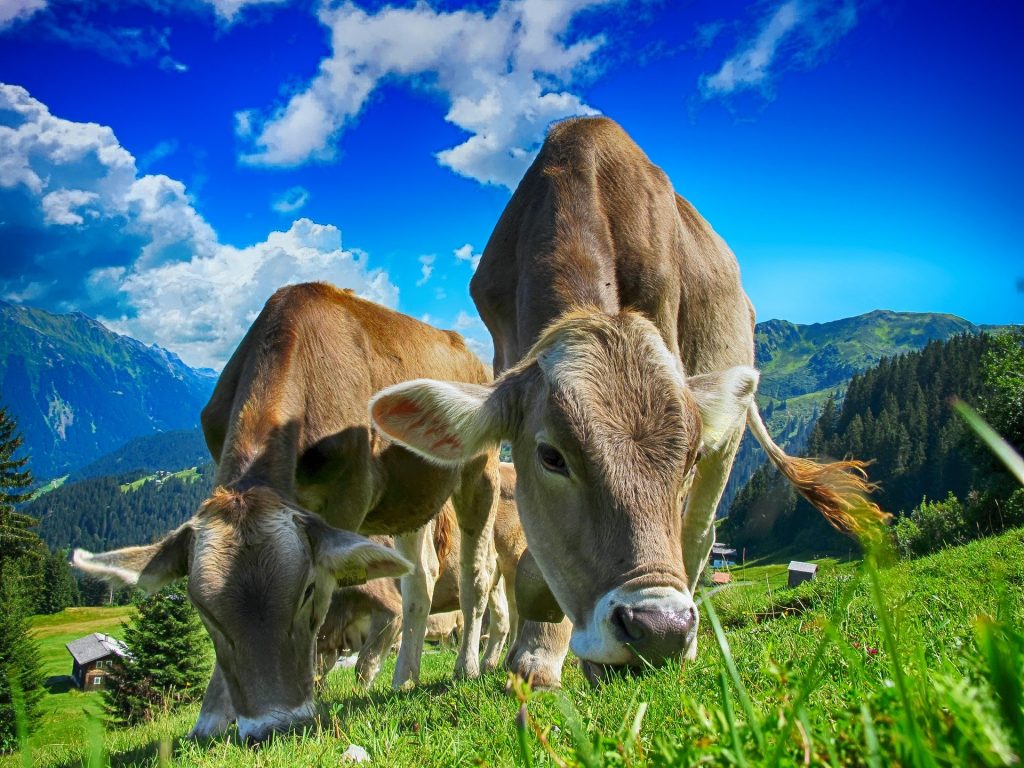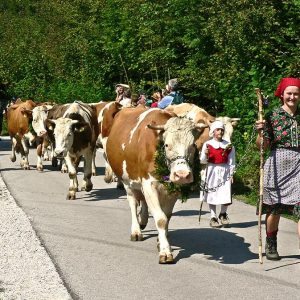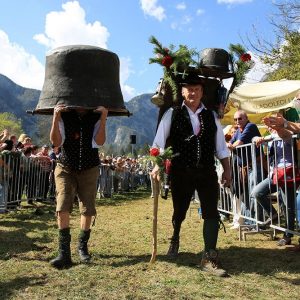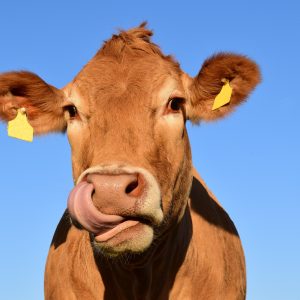The Cow is of the Bovine Ilk, one ends in Moo, the other Milk
Cow, a calm and diligent farm animal, used for centuries by generations to help conquer hard agricultural work. Not only are these animals great assistants, but a phenomenal source of meat, and providers of milk and other dairy products. As they greatly cherish these multi-functional animals, Slovenians hold a 70-year-old fun tradition called the Cows’ Ball, and now we will tell you all about it.

Vividly decorated cattle, the crystal sound of cowbells and a welcoming festival atmosphere – that is what you can expect at the Cows’s Ball on the dazzling Lake Bohinj in Slovenia. The mountain cattle drive takes place every September after spending the summer on the green mountain pastures, the traditionally decorated cattle are driven down to the valley, back in their stables where they will stay until next summer. The summer season in Slovenia alpine region officially ends in the third week of September with this very unique festival, as the local shepherds dressed in tradition Slovenian costumes walk their cattle off to holidays after a summer of hard work in the mountains. The festivities kick off on Friday evening with tours of Bohinj’s local dairies and their regional museum, filled with the nation’s historic artifacts, followed by a night of folklore music ensemble performances and dance groups, village skits and traditional music in the village of Stara Fužine in Triglav National Park. Of course plenty of cheese, butter, and honey will be on hand for tasting, and much, much more. An additional awards ceremony is dedicated to the best Cika cows, where the locals gift rewarding bells to them and their owners.
“Vividly decorated cattle, the crystal sound of cowbells and a welcoming festival atmosphere – that is what you can expect at the Cows’s Ball on the dazzling Lake Bohinj in Slovenia”
Slovenia is with other Balkan countries located between the Southwest Asian domestication centers and Northwest Europe, where the most productive cattle breeds have been developed. To praise this cow day over 10,000 people come out into the nature to enjoy the fun event as it marks the start of an active autumn. Having started in 1950, the Cow’s Ball is actually the oldest event in Bohinj. The locals from the area provide visitors and tourists a presentation on mountain life, and those who are interested in Alpine dairy farming can enjoy their day competing in traditional Slovenian games and fun sport activities which root back to old mountain traditions.
Believe it or not alpine dairy farming traces back to the 13th century, and that’s about time when cheese making started in the country. This industry became the main source of income for the Bohinj village as milk and other dairy products became an important part of the everyday nutrition for the residents. The famous Bohinj Sir cheese brand was first created in 1873 when a cheese maker from Switzerland started to educate local shepherds in Slovenia about Swiss cheese production. Underneath its firm and dry natural rind, the texture is hard and open with holes which are dispersed all around the cheese.
The flavors are aromatic, mild and nutty, the cheese becoming even better with prolonged maturation. Just a week after the day dedicated to cows, Slovenia celebrates the Bohinj cheese and wine festival where visitors and locals are welcome to come with their families to taste the delicious healthy cuisine and sip some fine Slovenian wine.
“Slovenia is with other Balkan countries located between the Southwest Asian domestication centers and Northwest Europe, where the most productive cattle breeds have been developed”
From the Cow’s Ball to other local events, Slovenia doesn’t leave you indifferent when it comes to their customs and traditions. The local home made dairy products, traditional folk dancing, and alpine sports which date back to the past centuries, the Cows Ball is definitely one of the most amusing and enjoyable events of the year, bringing a sip of good luck and positive energy as the summer ended and the cold and rainy days are awaiting the local populations and their cattle.


